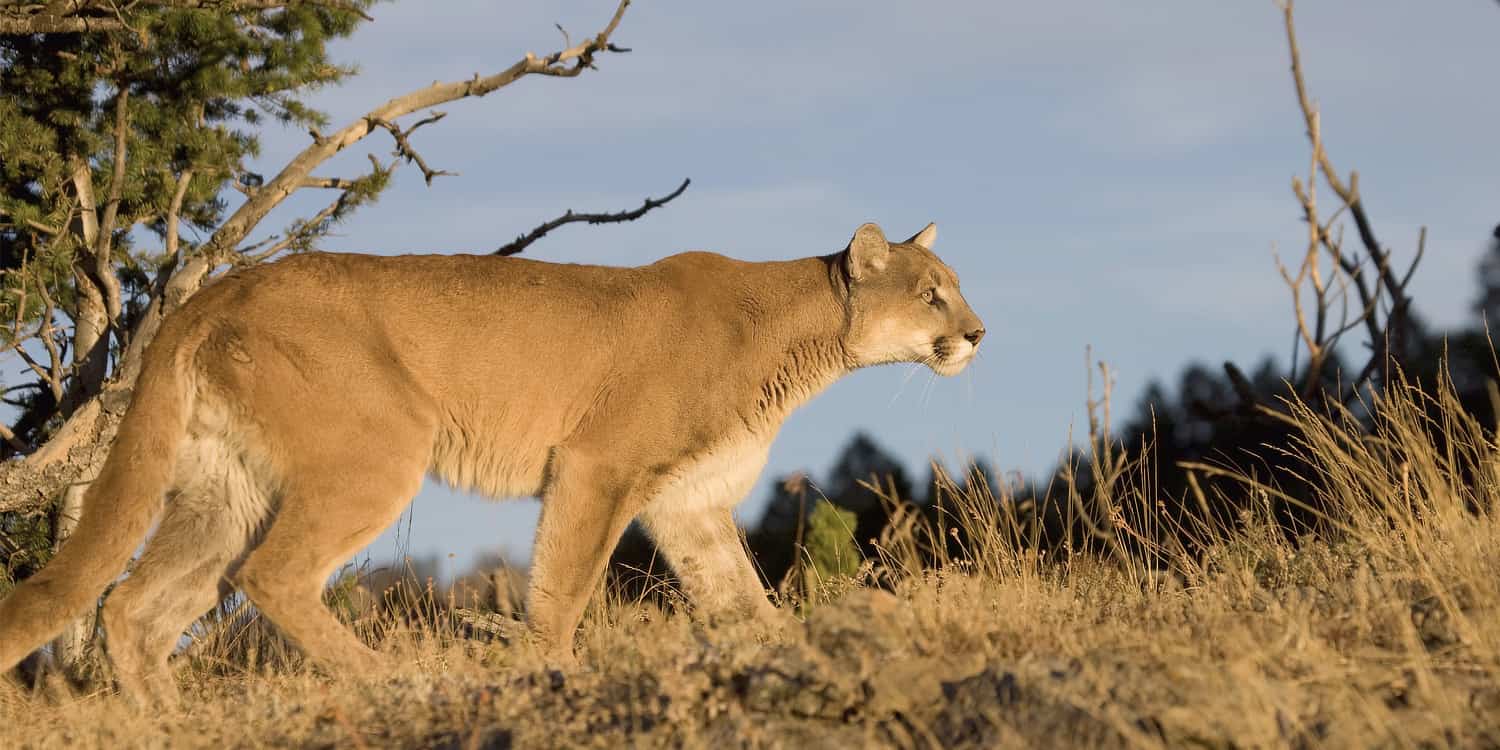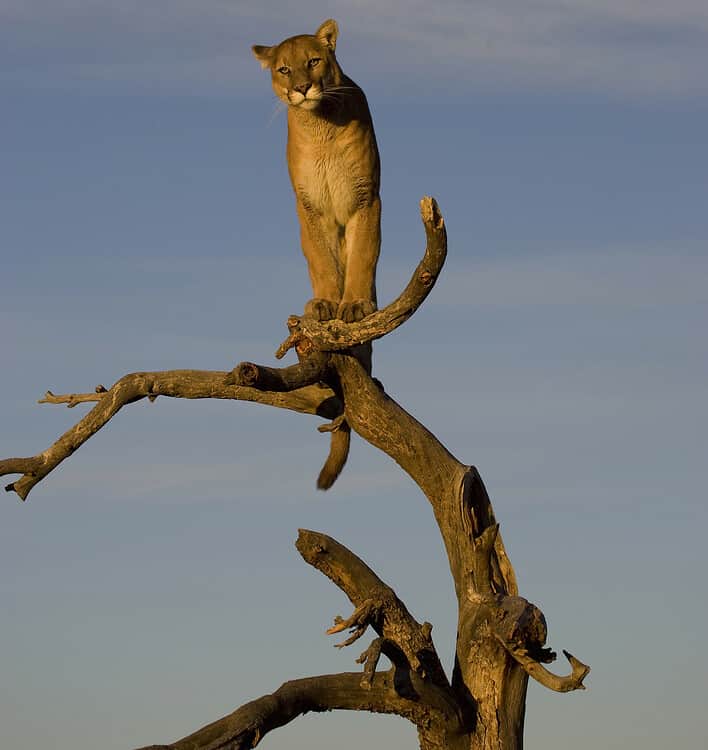
We're pleased to present you with a brief introduction of what to do if you see a mountain lion.
Whether you're new to the area or need a refresher about mountain lions, you'll probably pick up some helpful tips and interesting facts in our Q & A.
Answers have been provided by Andy Fisher, Chief of Interpretation and Education at Saguaro National Park and Mark Hart, Public Information Officer at Arizona Game & Fish Department.
A. "A lot...more than anyone living in the city would expect. We just don't see them." - Andy Fisher
"It's difficult for us to give solid population numbers for mountain lions because they are extremely elusive and the department doesn't heavily survey the species. However, our most current population estimate is approximately 2,700 statewide. Southern Arizona has a higher density than other areas due to the habitat and Sky Islands. They are not endangered and are actually quite abundant." - Mark Hart

A. "Everywhere. Usually, we see them up in the mountains, but we also see them moving across the desert, even in the suburbs if there is a reason to come down. They mostly hunt deer, javelina, and other mammals but are strong enough to crack a tortoise shell and have been known to. They are shy and prefer to stay hidden. We like to say that they will know you are there, before you know it is there, and it usually moves away without you even knowing about it. Personally, I have only seen tracks, scat, and the back half of a mountain lion as it quickly jumped up and away from where I was." - Andy Fisher
"Mountain lions prefer to hunt in steep, rocky terrain where they can ambush their prey from rock ledges above. Therefore, you're more likely to find them in mountain terrain, however, they are able to live in heavily vegetated areas like on the wild lands-urban interface as long as there is prey available. The vast majority of mountain lion sightings reported to the Arizona Game & Fish Department are from the Sabino Canyon area. We take 80-100 such calls a year." - Mark Hart
A. "Mountain Lions are much bigger. A male mountain lion can weigh 145lbs, whereas a bobcat usually tops out around 22lbs. Bobcats have a much shorter "bob" tail, and tufts of hair from their pointy ears. Think of Wilbur the Wildcat and that is a Bobcat face. Mountain Lions have long tails with black tips. Their bodies are long and solid buff color when they mature. Lion kittens can look like small bobcats, but they don't stay that way for long." - Andy Fisher
"They are different species with different diets, sizes, habitats, etc. Visit our website to read up on the urban lion, game lion, and urban bobcat." - Mark Hart
A. "If you see a mountain lion, feel blessed. I have worked the national parks for over 15 years, and they all had mountain lions. I have only seen the one, well, the back half of the one. They really prefer to be left alone and will usually get out of your way before you even know it is there." - Andy Fisher
Provided by Mark Hart --
A. "There is only one good reason for a mountain lion to be looking and thinking about another animal, people included. They are considering if they can eat it. You need to do everything in your power to convince him that you are not worth the fight. Gather small children to you, pick them up if you can. Appear as large and as intimidating as you can. Hold your coat over your head and throw rocks or sticks and yell - but don't crouch down to get the rocks. DO NOT RUN - seeing prey run away triggers that instinct in the cat to chase you down. Hold your ground - 'you don't wanna piece of me' should be the message you convey." - Andy Fisher
A. "If a cat does pounce, fight back with everything you've got. Try to protect your head and the back of your neck. Usually when we hear about lions attacking humans, the humans are running or jogging. Sometimes they are children who have run ahead of parents. Keep your group together. Keep your dog with you on a leash if you are out on a trail that allows dogs. Even so, attacks are very rare and if you pay attention to your surroundings, you might be lucky enough to spot one." - Andy Fisher
"Rarely. Mountain lions are elusive and outdoor recreationists will rarely see them (although they are there), much less have a negative encounter like an attack. There has never been a fatality from a mountain lion attack in Arizona." - Mark Hart
"We can see them year round, though we most often get reports of mothers with kittens in the spring or late summer when the juveniles are separating from mom and moving out to set their own territory. Usually, when we get a report of a lion encounter, it is one of these juveniles trying to find their own way in the world without mom's support." - Andy Fisher
"Typically wildlife are more active during their respective breeding season, but mountain lions breed year-round so they don't have a more active season. Like many species of wildlife though, they are more active at dawn, dusk, and at night." - Mark Hart
"This one is a bit trickier for us, as we really only get reports of the lions near or in Saguaro National Park. We have gotten calls from our neighboring communities, and we hear about lions in the foothills area, so it makes sense that we would usually see them on the edges of Tucson city. We do know that they move through washes or other green spaces, and if they are seen in town, usually it is in one of these corridors." - Andy Fisher
"On average, a mountain lion is documented monthly via trail or security camera in populated areas of Tucson, usually the Santa Catalina or Tucson Mountains foothills. Catalina State Park is one area where the department gets periodic reports of lion sightings." - Mark Hart
"I was really curious about this one because I had no recollection of any person in Southern Arizona being attacked. So I asked one of our biologists who has been here for 20 years and she didn't know of anyone ever being attacked either. We have heard about attacks in California and other places, but not here. Arizona Game and Fish would be directly involved in this kind of lion behavior and they may have better stats than what we could come up with." - Andy Fisher
"A mountain lion attack was reported March 16, 2023 in the Salt River Canyon. A boater was injured, but the mountain lion was driven away by others in the party. We cannot independently verify this report." - Mark Hart
-------------------------------------
If you'd like to learn even more about mountain lions, read or print the Arizona Game & Fish Department's Living With Mountain Lions brochure. You can also visit the Arizona-Sonora Desert Museum to see a Mountain Lion in-person.